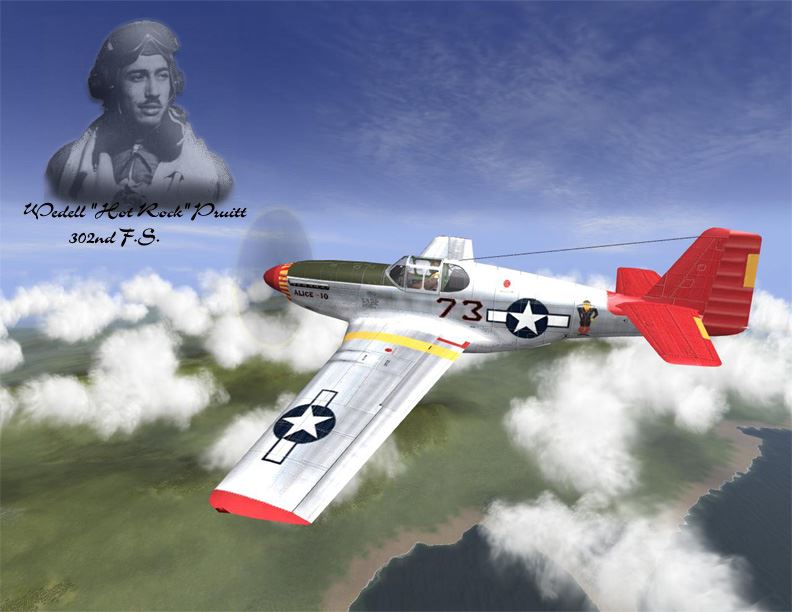
THE TUSKEGEE AIRMEN STORY: SUMMARY
This Speech Guide presents the Tuskegee Airmen Story, from its rugged beginning at the outset of World War II to its triumphant conclusion with the integration of the Air Force in 1948. It is important to remember that the training and utilization of Negro personnel for military aviation in World War II was successful because a unified Negro community willed it so. The Air Force did not want to accept Blacks because, at that time, they, along with a large segment of the White population, believed that Blacks were inherently inferior to Whites. It was only through political pressure brought on by the relentless effort of the Black community, with the support of a few sympathetic Whites, that the program was established in 1941.
Despite the burden of discrimination in training and combat, the Tuskegee Airmen achieved an outstanding combat record. They destroyed or damaged over 400 German aircraft, and over a thousand ground and sea targets. However the most renowned accomplishments were the sinking of a destroyer with only machine gun fire and the fact that the Tuskegee Airmen had an exemplary bomber escort record. These accomplishments were not gained without cost. The Tuskegee Airmen lost more than seventy pilots in combat, and nearly forty others who were shot down and became evadees and prisoners of war.
What should history say about the "Tuskegee Experience"?
Among all else, it should be recorded that this was the first time in U.S. history that a large scale government program was set up which provided an opportunity for Blacks to participate in a technically sophisticated flying program. This activity was the genesis of a national struggle for equal opportunity in our country that continues to this day. It should also say that, against the backdrop of bigotry, humiliating segregation, and discrimination, the Tuskegee Airmen achieved a record of unique accomplishments, a testimony to their determination, skill, discipline, and heroic actions in their preparation to meet all challenges. The Tuskegee Airmen story should be an incentive for creating future large-scale initiatives for the minority community, which will extend the window of opportunity into technological areas where they have been handicapped over the years.
Shortly before his death in 1906, the poet, Paul Lawrence Dunbar, wrote, "The Warrior's Prayer," a poem in which he identified the fight against racism as the critical battle where victory would bring not medals and parades, but full citizenship, as he wrote:
I do not ask that thou should front the fray,
And drive the warring foemen from my sight;
I only ask, O Lord, by night, by day,
Strength for the fight.
This was indeed, the unspoken creed of the pioneer participants in America's Black Air Forces who accepted the challenges and epic struggles of the global air war and the triumphs of the Tuskegee Experience during World War II.
EAST COAST CHAPTER 120 Waterfront Street, Ste 420-2189 National Harbor, MD 20745 | * indicates required
|